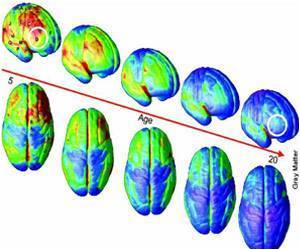A new discovery by Harvard scientists may turn 160 years of neuroanatomy on its head.

"Myelin is a relatively recent invention during evolution," says Arlotta. "It's thought that myelin allowed the brain to communicate really fast to the far reaches of the body, and that it has endowed the brain with the capacity to compute higher level functions." In fact, loss of myelin is a feature of a number of devastating diseases, including multiple sclerosis and schizophrenia.
But the new research shows that despite myelin essential roles in the brain, "some of the most evolved, most complex neurons of the nervous system have less myelin than older, more ancestral ones" Arlotta, co-director of the HSCI neuroscience program, says.
What this means, Arlotta says, is that the higher in the cerebral cortex one looks – the closer to the top of the brain, which is its most evolved region - the less myelin one finds. Not only that, but "neurons in this part of the brain display a brand new way of positioning myelin along their axons that has not been previously seen. They have 'intermittent myelin' with long axon tracts that lack myelin interspersed among myelin-rich segments.
Arlotta continues: "contrary to the common assumptions that neurons use a universal profile of myelin distribution on their axons, the work indicate that different neurons choose to myelinate their axons differently. In classic neurobiology textbooks myelin is represented on axons as a sequence of myelinated segments separated by very short nodes that lack myelin. This distribution of myelin was tacitly assumed to be always the same, on every neuron, from the beginning to the end of the axon. This new work finds this not to be the case."
The results of the research by Arlotta and post doctoral fellow Giulio Srubek Tomassy, the first author on the report, are published in the latest edition of Science, the journal of the American Association for the Advancement of Science.
Arlotta and Tomassy collaborated closely on the new work with postdoctoral fellow Daniel Berger of the Lichtman group, which generated one of the two massive electron microscopy data bases that made the work possible.
It is possible, said Tomassy, that these profiles of myelination "may be giving neurons an opportunity to branch out and 'talk' to neighboring neurons". For example, because axons cannot make synaptic contacts when they are myelinated, a possibility is that these long myelin gaps may be needed to increase neuronal communication and synchronize responses across different neurons. Perhaps, he and Arlotta postulate, the intermittent myelin is intended to fine-tune the electrical impulses traveling along the axons, in order to allow the emergence of highly complex neuronal behaviors.
Source-Eurekalert
 MEDINDIA
MEDINDIA



 Email
Email




